Cryptography and Network Security. Email Security email is














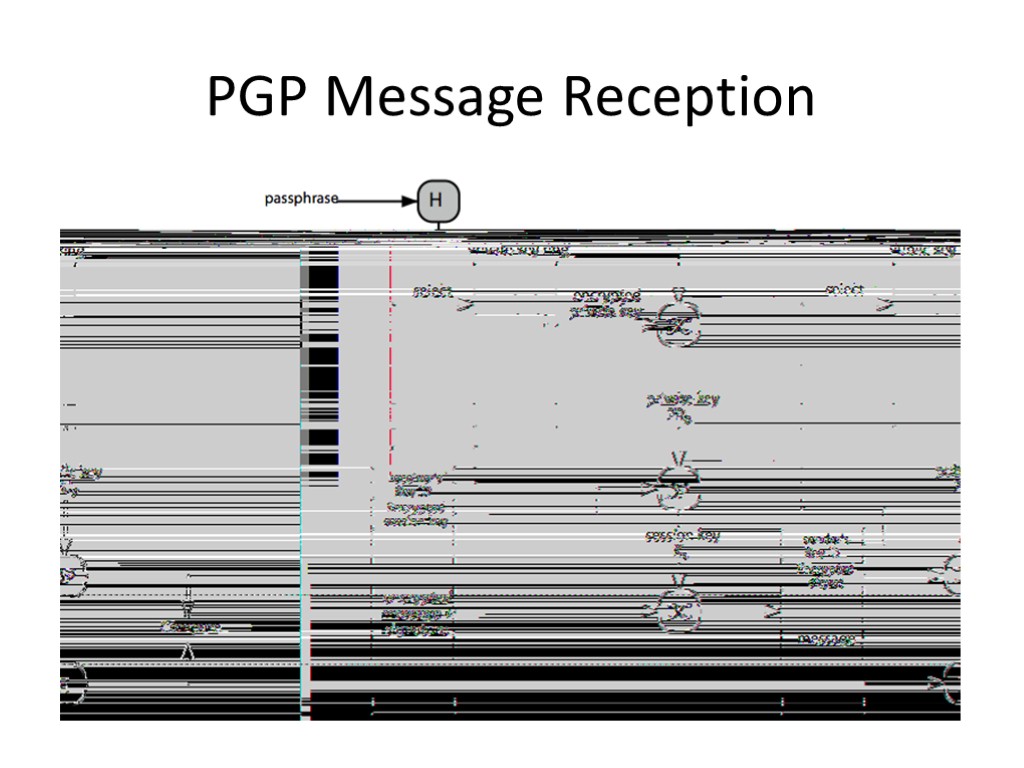
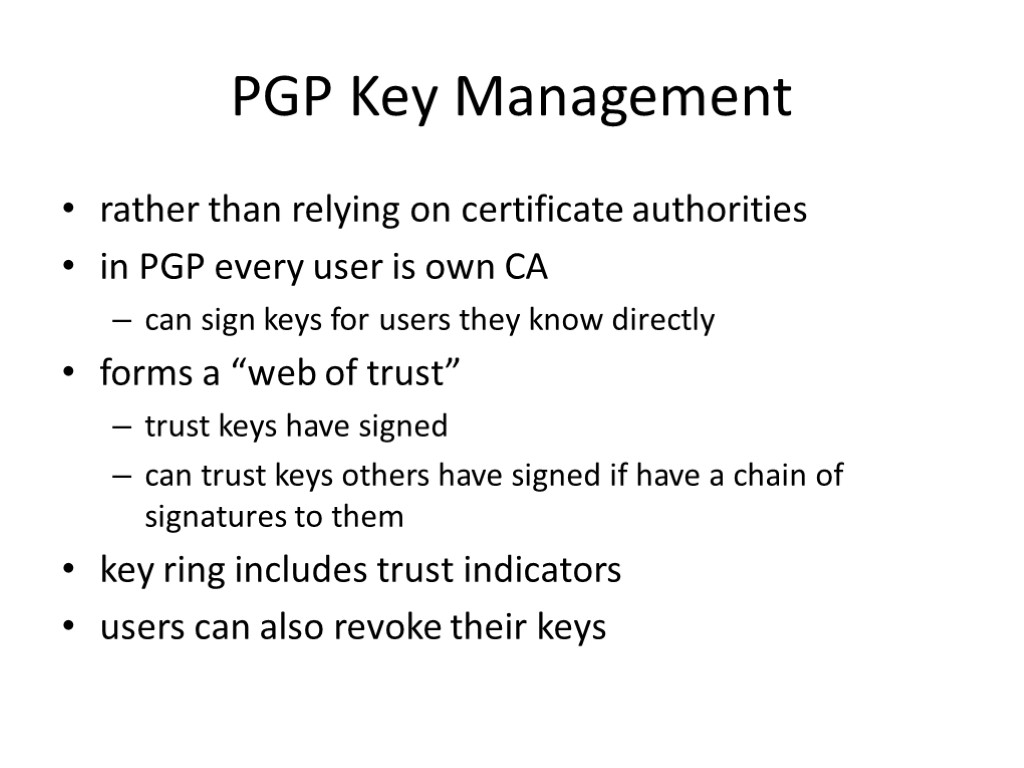

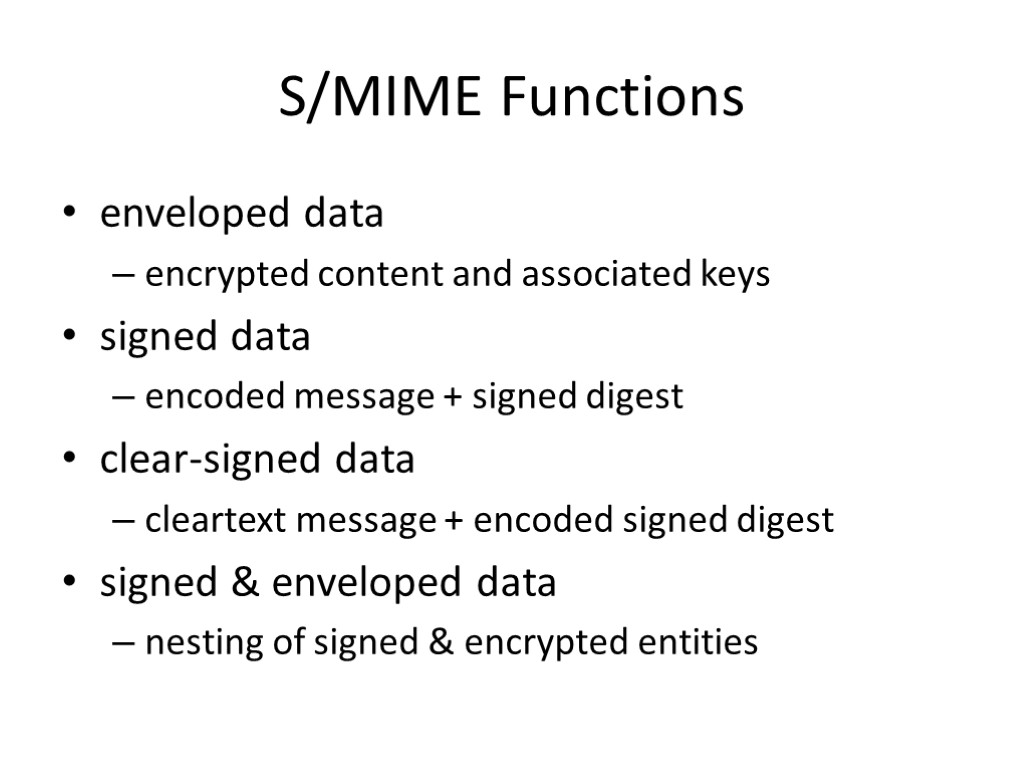

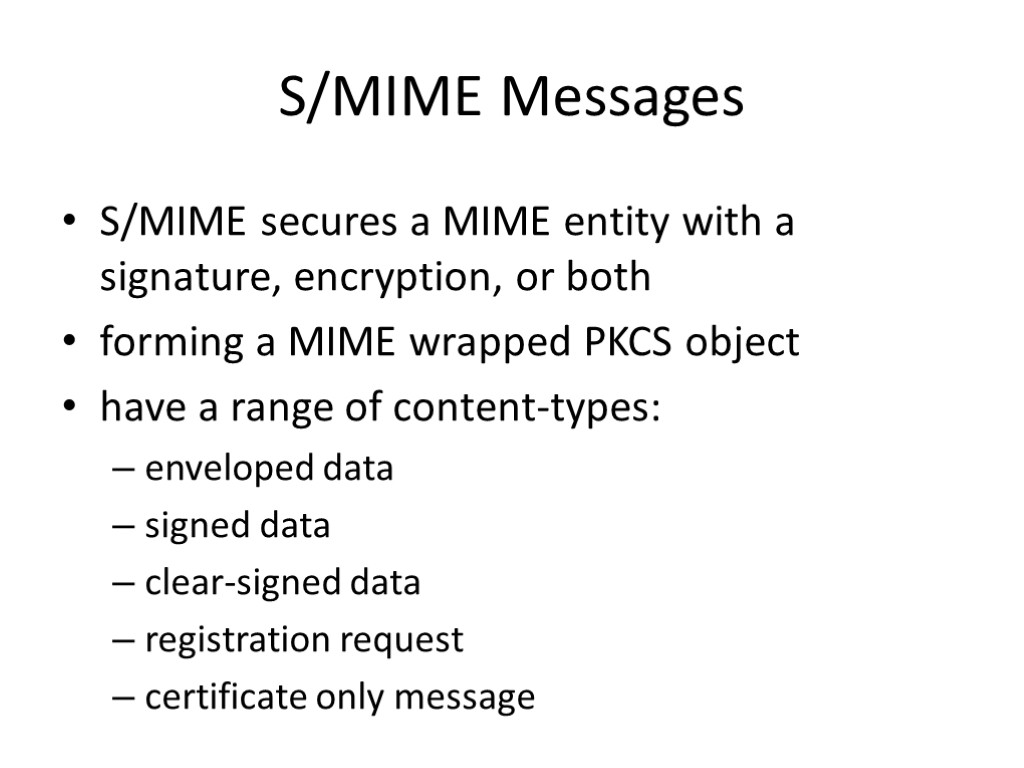



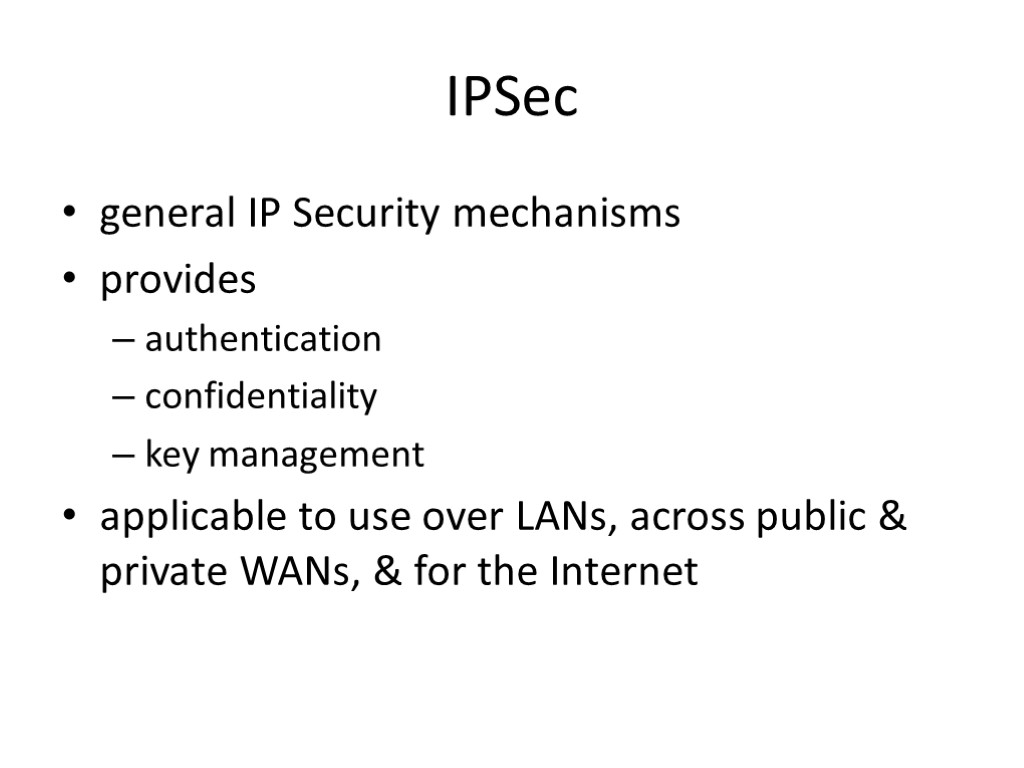

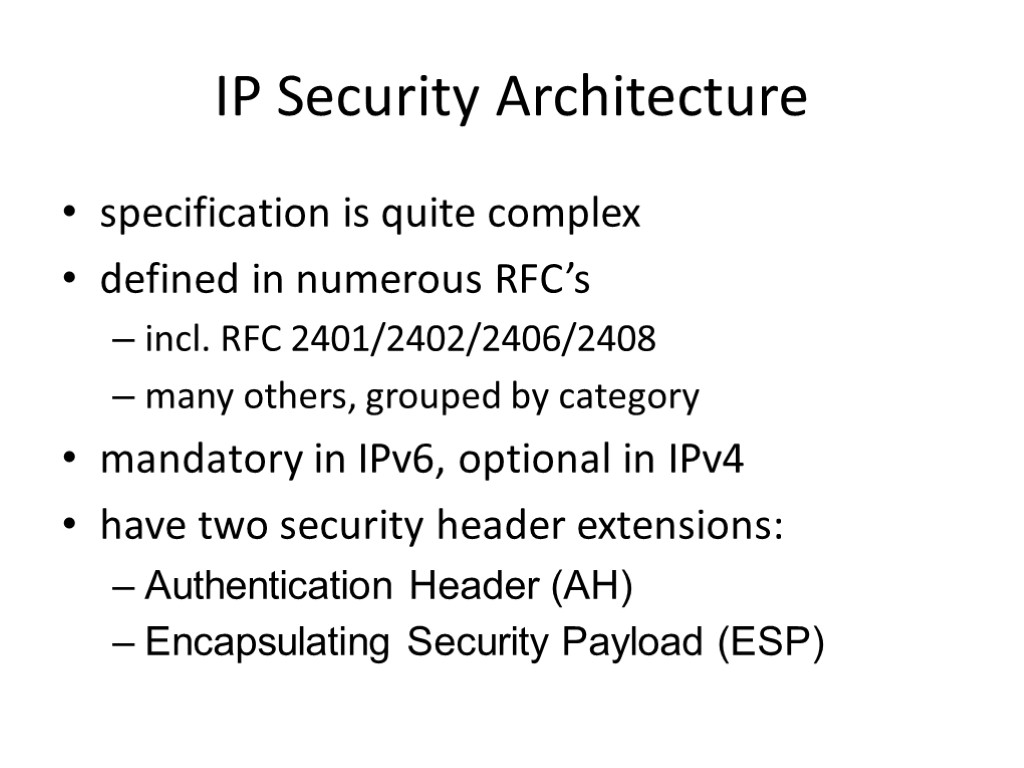


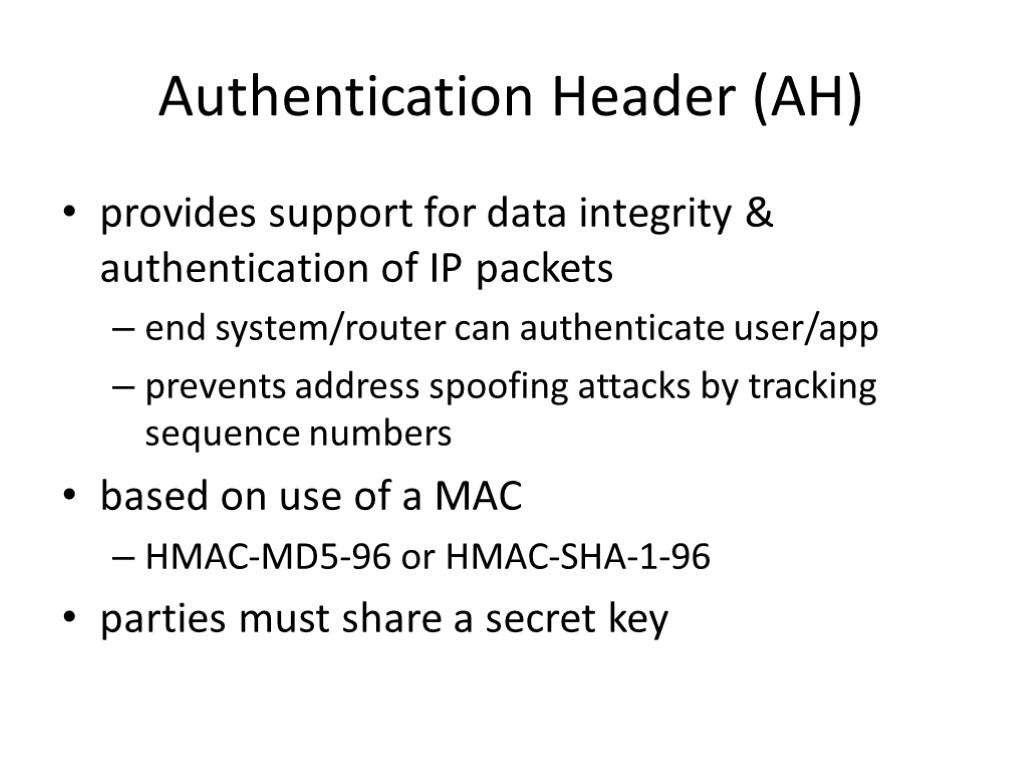





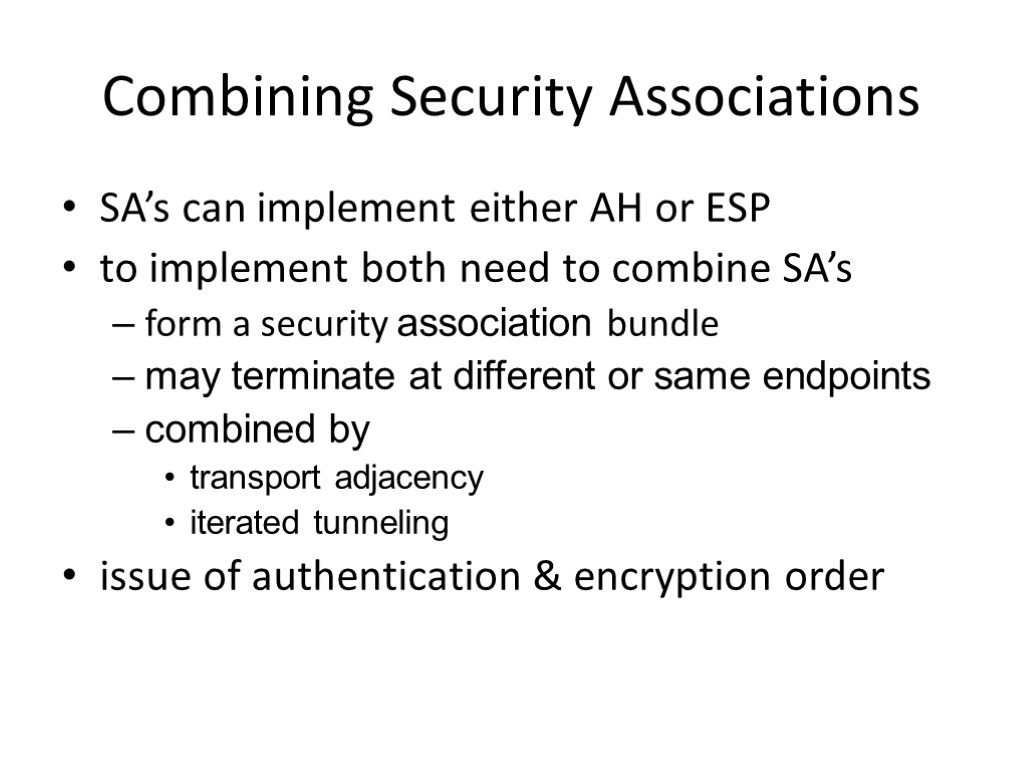
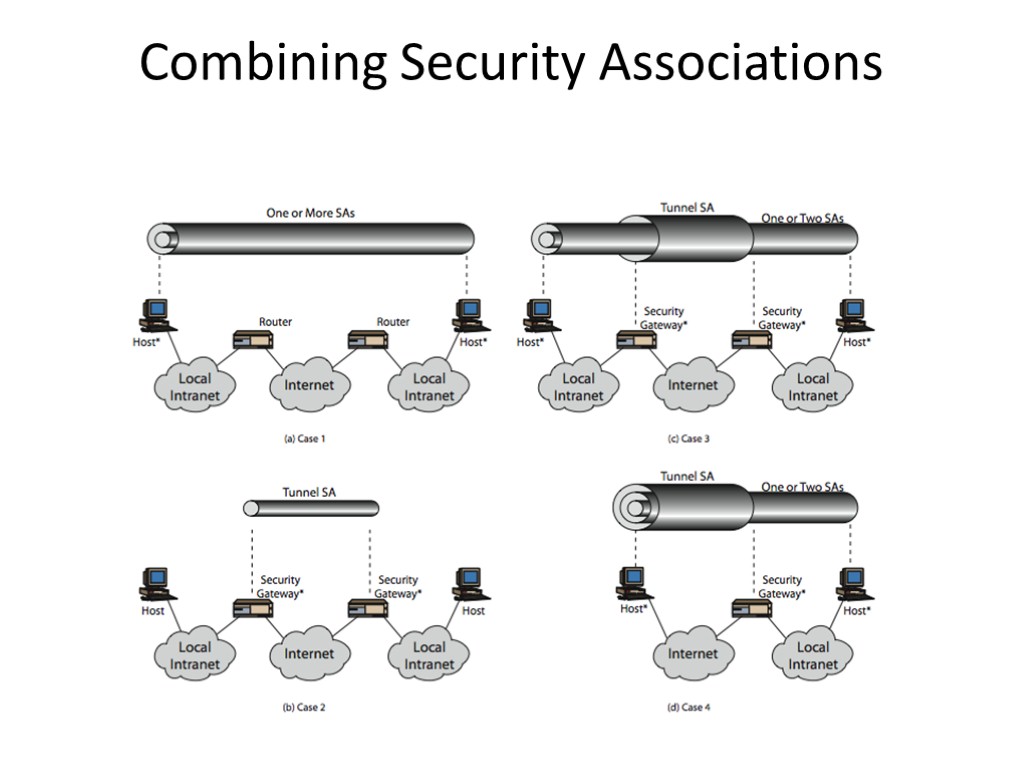


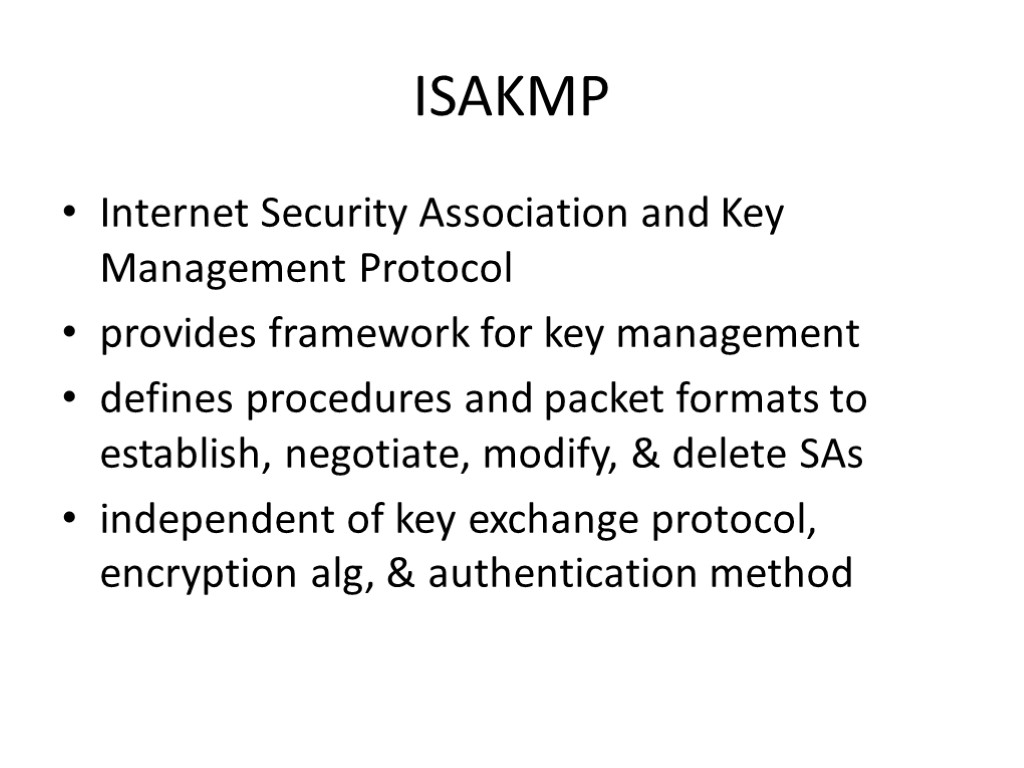




lecture13_email_and_ip_secutiry_.ppt
- Количество слайдов: 42
 Cryptography and Network Security
Cryptography and Network Security
 Email Security email is one of the most widely used and regarded network services currently message contents are not secure may be inspected either in transit or by suitably privileged users on destination system
Email Security email is one of the most widely used and regarded network services currently message contents are not secure may be inspected either in transit or by suitably privileged users on destination system
 Email Security Enhancements confidentiality protection from disclosure authentication of sender of message message integrity protection from modification non-repudiation of origin protection from denial by sender
Email Security Enhancements confidentiality protection from disclosure authentication of sender of message message integrity protection from modification non-repudiation of origin protection from denial by sender
 Pretty Good Privacy (PGP) widely used de facto secure email developed by Phil Zimmermann selected best available crypto algs to use integrated into a single program on Unix, PC, Macintosh and other systems originally free, now also have commercial versions available
Pretty Good Privacy (PGP) widely used de facto secure email developed by Phil Zimmermann selected best available crypto algs to use integrated into a single program on Unix, PC, Macintosh and other systems originally free, now also have commercial versions available
 PGP Operation – Authentication sender creates message use SHA-1 to generate 160-bit hash of message signed hash with RSA using sender's private key, and is attached to message receiver uses RSA with sender's public key to decrypt and recover hash code receiver verifies received message using hash of it and compares with decrypted hash code
PGP Operation – Authentication sender creates message use SHA-1 to generate 160-bit hash of message signed hash with RSA using sender's private key, and is attached to message receiver uses RSA with sender's public key to decrypt and recover hash code receiver verifies received message using hash of it and compares with decrypted hash code
 PGP Operation – Confidentiality sender generates message and 128-bit random number as session key for it encrypt message using CAST-128 / IDEA / 3DES in CBC mode with session key session key encrypted using RSA with recipient's public key, & attached to msg receiver uses RSA with private key to decrypt and recover session key session key is used to decrypt message
PGP Operation – Confidentiality sender generates message and 128-bit random number as session key for it encrypt message using CAST-128 / IDEA / 3DES in CBC mode with session key session key encrypted using RSA with recipient's public key, & attached to msg receiver uses RSA with private key to decrypt and recover session key session key is used to decrypt message
 PGP Operation – Confidentiality & Authentication can use both services on same message create signature & attach to message encrypt both message & signature attach RSA/ElGamal encrypted session key
PGP Operation – Confidentiality & Authentication can use both services on same message create signature & attach to message encrypt both message & signature attach RSA/ElGamal encrypted session key
 PGP Operation – Compression by default PGP compresses message after signing but before encrypting so can store uncompressed message & signature for later verification & because compression is non deterministic uses ZIP compression algorithm
PGP Operation – Compression by default PGP compresses message after signing but before encrypting so can store uncompressed message & signature for later verification & because compression is non deterministic uses ZIP compression algorithm
 PGP Operation – Email Compatibility when using PGP will have binary data to send (encrypted message etc) however email was designed only for text hence PGP must encode raw binary data into printable ASCII characters uses radix-64 algorithm maps 3 bytes to 4 printable chars also appends a CRC PGP also segments messages if too big
PGP Operation – Email Compatibility when using PGP will have binary data to send (encrypted message etc) however email was designed only for text hence PGP must encode raw binary data into printable ASCII characters uses radix-64 algorithm maps 3 bytes to 4 printable chars also appends a CRC PGP also segments messages if too big
 PGP Operation – Summary
PGP Operation – Summary
 PGP Session Keys need a session key for each message of varying sizes: 56-bit DES, 128-bit CAST or IDEA, 168-bit Triple-DES generated using ANSI X12.17 mode uses random inputs taken from previous uses and from keystroke timing of user
PGP Session Keys need a session key for each message of varying sizes: 56-bit DES, 128-bit CAST or IDEA, 168-bit Triple-DES generated using ANSI X12.17 mode uses random inputs taken from previous uses and from keystroke timing of user
 PGP Public & Private Keys since many public/private keys may be in use, need to identify which is actually used to encrypt session key in a message could send full public-key with every message but this is inefficient rather use a key identifier based on key is least significant 64-bits of the key will very likely be unique also use key ID in signatures
PGP Public & Private Keys since many public/private keys may be in use, need to identify which is actually used to encrypt session key in a message could send full public-key with every message but this is inefficient rather use a key identifier based on key is least significant 64-bits of the key will very likely be unique also use key ID in signatures
 PGP Key Rings each PGP user has a pair of keyrings: public-key ring contains all the public-keys of other PGP users known to this user, indexed by key ID private-key ring contains the public/private key pair(s) for this user, indexed by key ID & encrypted keyed from a hashed passphrase security of private keys thus depends on the pass-phrase security
PGP Key Rings each PGP user has a pair of keyrings: public-key ring contains all the public-keys of other PGP users known to this user, indexed by key ID private-key ring contains the public/private key pair(s) for this user, indexed by key ID & encrypted keyed from a hashed passphrase security of private keys thus depends on the pass-phrase security
 PGP Message Reception
PGP Message Reception
 PGP Key Management rather than relying on certificate authorities in PGP every user is own CA can sign keys for users they know directly forms a “web of trust” trust keys have signed can trust keys others have signed if have a chain of signatures to them key ring includes trust indicators users can also revoke their keys
PGP Key Management rather than relying on certificate authorities in PGP every user is own CA can sign keys for users they know directly forms a “web of trust” trust keys have signed can trust keys others have signed if have a chain of signatures to them key ring includes trust indicators users can also revoke their keys
 S/MIME (Secure/Multipurpose Internet Mail Extensions) security enhancement to MIME email original Internet RFC822 email was text only MIME provided support for varying content types and multi-part messages with encoding of binary data to textual form S/MIME added security enhancements have S/MIME support in many mail agents eg MS Outlook, Mozilla, Mac Mail etc
S/MIME (Secure/Multipurpose Internet Mail Extensions) security enhancement to MIME email original Internet RFC822 email was text only MIME provided support for varying content types and multi-part messages with encoding of binary data to textual form S/MIME added security enhancements have S/MIME support in many mail agents eg MS Outlook, Mozilla, Mac Mail etc
 S/MIME Functions enveloped data encrypted content and associated keys signed data encoded message + signed digest clear-signed data cleartext message + encoded signed digest signed & enveloped data nesting of signed & encrypted entities
S/MIME Functions enveloped data encrypted content and associated keys signed data encoded message + signed digest clear-signed data cleartext message + encoded signed digest signed & enveloped data nesting of signed & encrypted entities
 S/MIME Cryptographic Algorithms digital signatures: DSS & RSA hash functions: SHA-1 & MD5 session key encryption: ElGamal & RSA message encryption: AES, Triple-DES, RC2/40 and others MAC: HMAC with SHA-1 have process to decide which algs to use
S/MIME Cryptographic Algorithms digital signatures: DSS & RSA hash functions: SHA-1 & MD5 session key encryption: ElGamal & RSA message encryption: AES, Triple-DES, RC2/40 and others MAC: HMAC with SHA-1 have process to decide which algs to use
 S/MIME Messages S/MIME secures a MIME entity with a signature, encryption, or both forming a MIME wrapped PKCS object have a range of content-types: enveloped data signed data clear-signed data registration request certificate only message
S/MIME Messages S/MIME secures a MIME entity with a signature, encryption, or both forming a MIME wrapped PKCS object have a range of content-types: enveloped data signed data clear-signed data registration request certificate only message
 S/MIME Certificate Processing S/MIME uses X.509 v3 certificates managed using a hybrid of a strict X.509 CA hierarchy & PGP’s web of trust each client has a list of trusted CA’s certs and own public/private key pairs & certs certificates must be signed by trusted CA’s
S/MIME Certificate Processing S/MIME uses X.509 v3 certificates managed using a hybrid of a strict X.509 CA hierarchy & PGP’s web of trust each client has a list of trusted CA’s certs and own public/private key pairs & certs certificates must be signed by trusted CA’s
 Certificate Authorities have several well-known CA’s Verisign one of most widely used Verisign issues several types of Digital IDs increasing levels of checks & hence trust Class Identity Checks Usage 1 name/email check web browsing/email 2 + enroll/addr check email, subs, s/w validate 3 + ID documents e-banking/service access
Certificate Authorities have several well-known CA’s Verisign one of most widely used Verisign issues several types of Digital IDs increasing levels of checks & hence trust Class Identity Checks Usage 1 name/email check web browsing/email 2 + enroll/addr check email, subs, s/w validate 3 + ID documents e-banking/service access
 IP Security have a range of application specific security mechanisms eg. S/MIME, PGP, Kerberos, SSL/HTTPS however there are security concerns that cut across protocol layers would like security implemented by the network for all applications
IP Security have a range of application specific security mechanisms eg. S/MIME, PGP, Kerberos, SSL/HTTPS however there are security concerns that cut across protocol layers would like security implemented by the network for all applications
 IPSec general IP Security mechanisms provides authentication confidentiality key management applicable to use over LANs, across public & private WANs, & for the Internet
IPSec general IP Security mechanisms provides authentication confidentiality key management applicable to use over LANs, across public & private WANs, & for the Internet
 Benefits of IPSec in a firewall/router provides strong security to all traffic crossing the perimeter in a firewall/router is resistant to bypass is below transport layer, hence transparent to applications can be transparent to end users can provide security for individual users secures routing architecture
Benefits of IPSec in a firewall/router provides strong security to all traffic crossing the perimeter in a firewall/router is resistant to bypass is below transport layer, hence transparent to applications can be transparent to end users can provide security for individual users secures routing architecture
 IP Security Architecture specification is quite complex defined in numerous RFC’s incl. RFC 2401/2402/2406/2408 many others, grouped by category mandatory in IPv6, optional in IPv4 have two security header extensions: Authentication Header (AH) Encapsulating Security Payload (ESP)
IP Security Architecture specification is quite complex defined in numerous RFC’s incl. RFC 2401/2402/2406/2408 many others, grouped by category mandatory in IPv6, optional in IPv4 have two security header extensions: Authentication Header (AH) Encapsulating Security Payload (ESP)
 IPSec Services Access control Connectionless integrity Data origin authentication Rejection of replayed packets a form of partial sequence integrity Confidentiality (encryption) Limited traffic flow confidentiality
IPSec Services Access control Connectionless integrity Data origin authentication Rejection of replayed packets a form of partial sequence integrity Confidentiality (encryption) Limited traffic flow confidentiality
 Security Associations a one-way relationship between sender & receiver that affords security for traffic flow defined by 3 parameters: Security Parameters Index (SPI) IP Destination Address Security Protocol Identifier has a number of other parameters seq no, AH & EH info, lifetime etc have a database of Security Associations
Security Associations a one-way relationship between sender & receiver that affords security for traffic flow defined by 3 parameters: Security Parameters Index (SPI) IP Destination Address Security Protocol Identifier has a number of other parameters seq no, AH & EH info, lifetime etc have a database of Security Associations
 Authentication Header (AH) provides support for data integrity & authentication of IP packets end system/router can authenticate user/app prevents address spoofing attacks by tracking sequence numbers based on use of a MAC HMAC-MD5-96 or HMAC-SHA-1-96 parties must share a secret key
Authentication Header (AH) provides support for data integrity & authentication of IP packets end system/router can authenticate user/app prevents address spoofing attacks by tracking sequence numbers based on use of a MAC HMAC-MD5-96 or HMAC-SHA-1-96 parties must share a secret key
 Authentication Header Authentication Header
Authentication Header Authentication Header
 Transport & Tunnel Modes
Transport & Tunnel Modes
 Encapsulating Security Payload (ESP) provides message content confidentiality & limited traffic flow confidentiality can optionally provide the same authentication services as AH supports range of ciphers, modes, padding incl. DES, Triple-DES, RC5, IDEA, CAST etc CBC & other modes padding needed to fill blocksize, fields, for traffic flow
Encapsulating Security Payload (ESP) provides message content confidentiality & limited traffic flow confidentiality can optionally provide the same authentication services as AH supports range of ciphers, modes, padding incl. DES, Triple-DES, RC5, IDEA, CAST etc CBC & other modes padding needed to fill blocksize, fields, for traffic flow
 Encapsulating Security Payload
Encapsulating Security Payload
 Transport vs Tunnel Mode ESP transport mode is used to encrypt & optionally authenticate IP data data protected but header left in clear can do traffic analysis but is efficient good for ESP host to host traffic tunnel mode encrypts entire IP packet add new header for next hop good for VPNs, gateway to gateway security
Transport vs Tunnel Mode ESP transport mode is used to encrypt & optionally authenticate IP data data protected but header left in clear can do traffic analysis but is efficient good for ESP host to host traffic tunnel mode encrypts entire IP packet add new header for next hop good for VPNs, gateway to gateway security
 Combining Security Associations SA’s can implement either AH or ESP to implement both need to combine SA’s form a security association bundle may terminate at different or same endpoints combined by transport adjacency iterated tunneling issue of authentication & encryption order
Combining Security Associations SA’s can implement either AH or ESP to implement both need to combine SA’s form a security association bundle may terminate at different or same endpoints combined by transport adjacency iterated tunneling issue of authentication & encryption order
 Combining Security Associations
Combining Security Associations
 Key Management handles key generation & distribution typically need 2 pairs of keys 2 per direction for AH & ESP manual key management sysadmin manually configures every system automated key management automated system for on demand creation of keys for SA’s in large systems has Oakley & ISAKMP elements
Key Management handles key generation & distribution typically need 2 pairs of keys 2 per direction for AH & ESP manual key management sysadmin manually configures every system automated key management automated system for on demand creation of keys for SA’s in large systems has Oakley & ISAKMP elements
 Oakley a key exchange protocol based on Diffie-Hellman key exchange adds features to address weaknesses cookies, groups (global params), nonces, DH key exchange with authentication can use arithmetic in prime fields or elliptic curve fields
Oakley a key exchange protocol based on Diffie-Hellman key exchange adds features to address weaknesses cookies, groups (global params), nonces, DH key exchange with authentication can use arithmetic in prime fields or elliptic curve fields
 ISAKMP Internet Security Association and Key Management Protocol provides framework for key management defines procedures and packet formats to establish, negotiate, modify, & delete SAs independent of key exchange protocol, encryption alg, & authentication method
ISAKMP Internet Security Association and Key Management Protocol provides framework for key management defines procedures and packet formats to establish, negotiate, modify, & delete SAs independent of key exchange protocol, encryption alg, & authentication method
 ISAKMP
ISAKMP
 ISAKMP Payloads & Exchanges have a number of ISAKMP payload types: Security, Proposal, Transform, Key, Identification, Certificate, Certificate, Hash, Signature, Nonce, Notification, Delete ISAKMP has framework for 5 types of message exchanges: base, identity protection, authentication only, aggressive, informational
ISAKMP Payloads & Exchanges have a number of ISAKMP payload types: Security, Proposal, Transform, Key, Identification, Certificate, Certificate, Hash, Signature, Nonce, Notification, Delete ISAKMP has framework for 5 types of message exchanges: base, identity protection, authentication only, aggressive, informational
 Summary have considered: IPSec security framework AH ESP key management & Oakley/ISAKMP
Summary have considered: IPSec security framework AH ESP key management & Oakley/ISAKMP
 Summary have considered: secure email PGP S/MIME
Summary have considered: secure email PGP S/MIME

